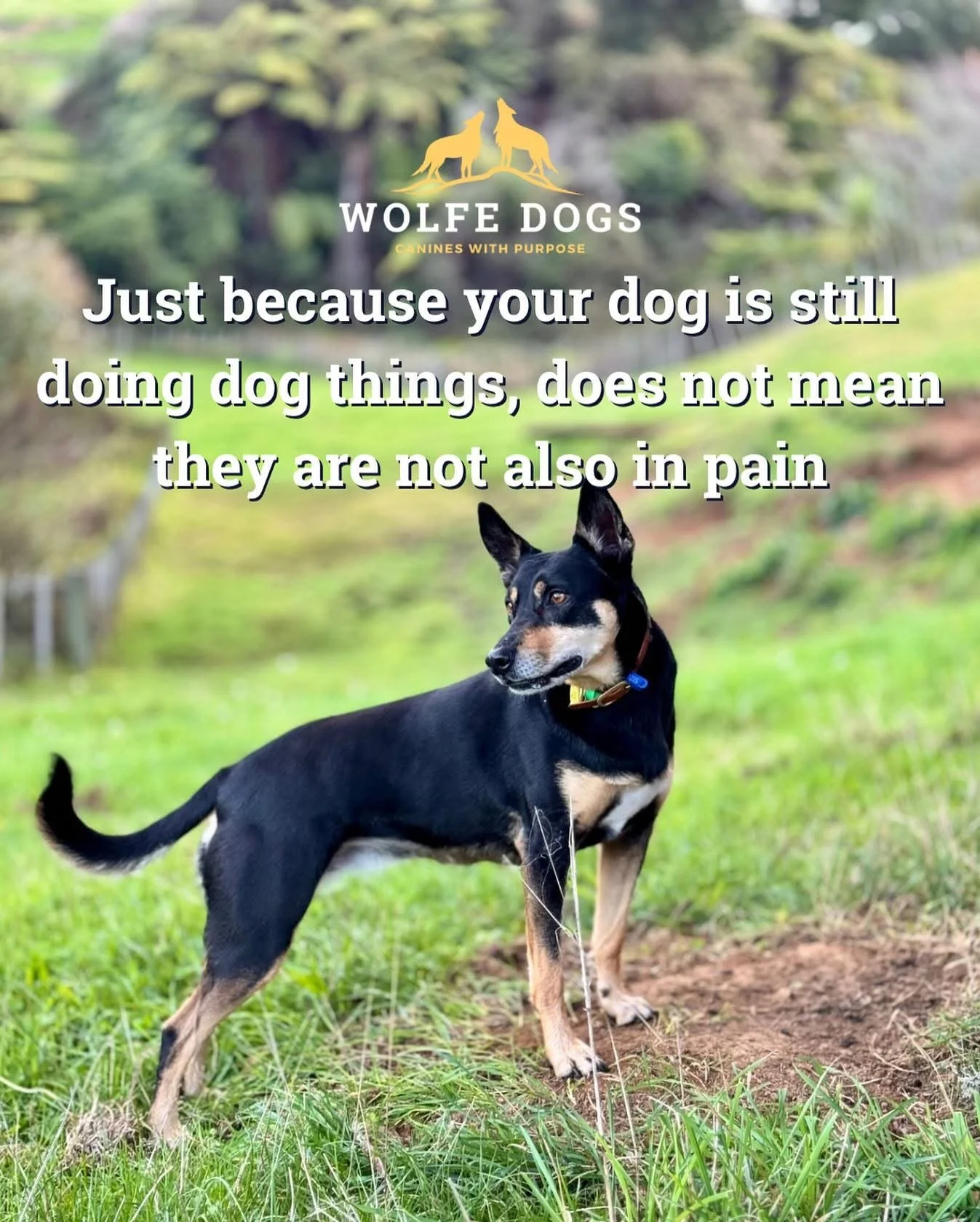Just because your dog still wants to go for a walk, doesn’t mean they’re not also in pain
I am a dog trainer and this week alone I have sent 5 behaviour consult dogs to their veterinarians to check out their gait abnormalities as part of our behaviour modification work.
Funky elbows, hips, knees & spines. We’ve also discussed chronic ear infections & sensitive guts.
These dogs can still look like a dog who is still keen to go for walks. To play ball. And to zoom when excited. Because dogs will push through a lot of pain, especially when excitement/arousal is masking it in the moment.
But it can also look like:
- Shorter fuse, especially when their space is invaded.
- Seemingly “low energy” or resting more when compared to the norm for them or their type.
- Struggles getting going in the morning.
- Deterioration of behaviour over the course of the day.
- Uneven gait, not getting full range of movement or movement is lopsided, scooping instead of straight, choppy instead of free flowing. Video footage is helpful to get a clearer view of this in many cases, especially if you can compare to a “normal” gait.
- Uneven stance, perhaps reluctant to fully weight bear on a particular leg or one/more legs twist.
- Increased sensitivities to handling around a specific body part or putting equipment on/off.
- Changes in eating patterns, “going off” food.
- Increased sensitivity to noises or changes in the environment.
If you suspect any of these apply to your dog, even if they are still happy to go for walks, please discuss them with your pain-savvy vet. Getting on top of pain early means that behavioural changes can be managed before they become established behavioural patterns, making the training aspects far easier on all involved.

